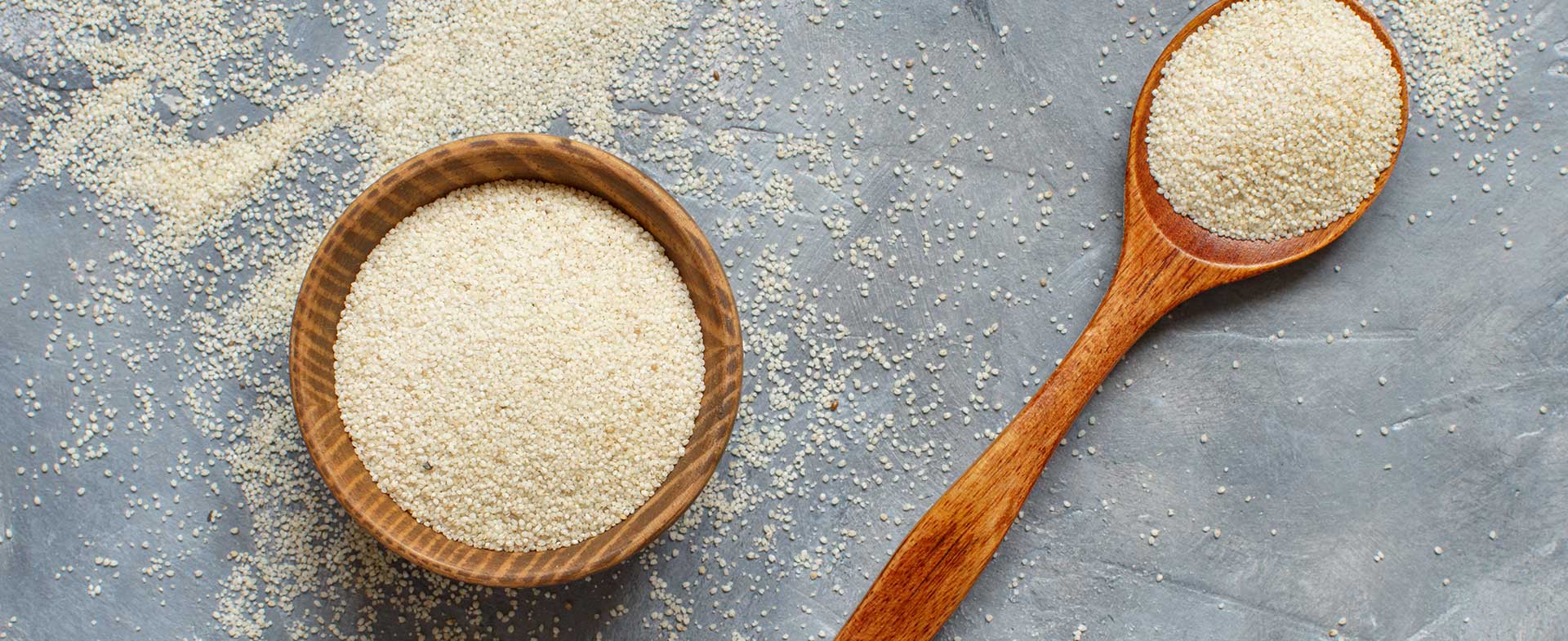An ancient grain called fonio is gaining attention in health food circles. It’s a tasty, gluten-free alternative to wheat that some people claim is the new quinoa. But fonio isn’t new. This superstar among grains has been cultivated for thousands of years. In fact, some sociologists believe it may be the oldest ancient grain on record.
What Is Fonio?
Fonio is an ancient grain that grows in the dry climate of West Africa. Part of the millet family, fonio is a cereal grass characterized by its tiny seeds—the source of the edible grain.
What makes fonio unique is its ability to thrive in poor soil without much water. It doesn’t require irrigation. In fact, it can even grow in drought conditions, all without fertilizer.
It also grows quickly, reaching maturity in six to eight weeks compared to three or four months for comparable grains like quinoa and amaranth. Once mature, fonio stores well and doesn’t attract pests.
The Nutritional Perks Of Fonio
Unlike other ancient grains such as farro, amaranth or quinoa, fonio is so small and fine it appears almost like grains of sand. But this tiny grain is a nutritional powerhouse.

Like other ancient grains, fonio boasts more nutrients, flavor and protein than refined wheat. It provides iron, magnesium, zinc and phosphorus and is a good source of fiber and the B vitamin, thiamine. It’s also low in calories and gluten-free, making it a great option for people who have celiac disease.
Fonio boasts one feature that makes it stand out in its category: It contains more essential and non-essential amino acids than other grains. These are the building blocks your body needs to function. Our bodies use amino acids to make proteins, neurotransmitters and hormones.
Essential amino acids must come from your diet. Your body can’t make them. They’re typically found in animal products like beef, eggs and dairy. Fonio is unique among grains because it contains an essential amino acid profile that’s higher in the essential acid, methionine, and non-essential amino acid, cystine.
How To Cook With Fonio
Fonio can be tough to find in grocery stores, but you can purchase it from online retailers. It has a slightly nutty, earthy flavor, which makes it tasty enough to stand alone and versatile enough to stand out in complex recipes. It cooks up quickly—in just five or six minutes—and absorbs flavors from herbs, spices and sauces beautifully.
Cooking with fonio is simple, and you can use it the same way you would rice or quinoa. The trick is getting past the fact that it looks like sand. The granules are very tiny, but when you drop them into boiling water or broth, they expand and transform into a light, fluffy texture similar to couscous.
Sub fonio in recipes that call for nearly any whole grain—or stir it into soups, salads and stews. A simple recipe: Pour 2 cups of boiling liquid over 1 cup of grains, cover and let stand for five to six minutes. Then fluff the grains with a fork. Add raisins, nuts and spices for porridge or whip up a side dish by mixing it with your favorite herbs and spices. Your only mission: Be creative.
Bethany Thayer, MS, RDN, is the director of the Henry Ford Center for Health Promotion and Disease Prevention. Learn more about Bethany.



